https://www.silverscalesflytying.co.uk/wp-content/uploads/2014/05/IMG_1837.jpg
Following on from the last article, I thought I would discuss more in depth which flies any newcomer to Saltwater fly fishing in the UK should look at tying and using to try and catch Bass or any of our other native saltwater species.
Probably one of the easiest flies for a new tier to attempt would be the Clouser Minnow. The Clouser Minnow is responsible for catching more species of fish around the globe than any other pattern, such is its versatility and effectiveness.
The techniques for tying this pattern are fairly basic and shouldn't present a beginner with too many problems. There is a plethora of video's on You tube describing how to tie this particular pattern and variations using different materials and ways of tying it. Bob Clousers original tying is probably the best starting point but have a look at my way on our You tube channel as well. The Clouser Minnow was originally tied with Bucktail, however the pattern suits many different materials and I actually prefer to use synthetics over naturals for Bass flies and have had far more success catching Bass with them. I think it's the translucent nature of many synthetics that scores over natural materials and with a little flash added you can achieve a very natural looking presentation. Materials such as our Buckfibre, Big fish fibre, and Crafty Minnow fur can all be used to tie The Clouser Minnow.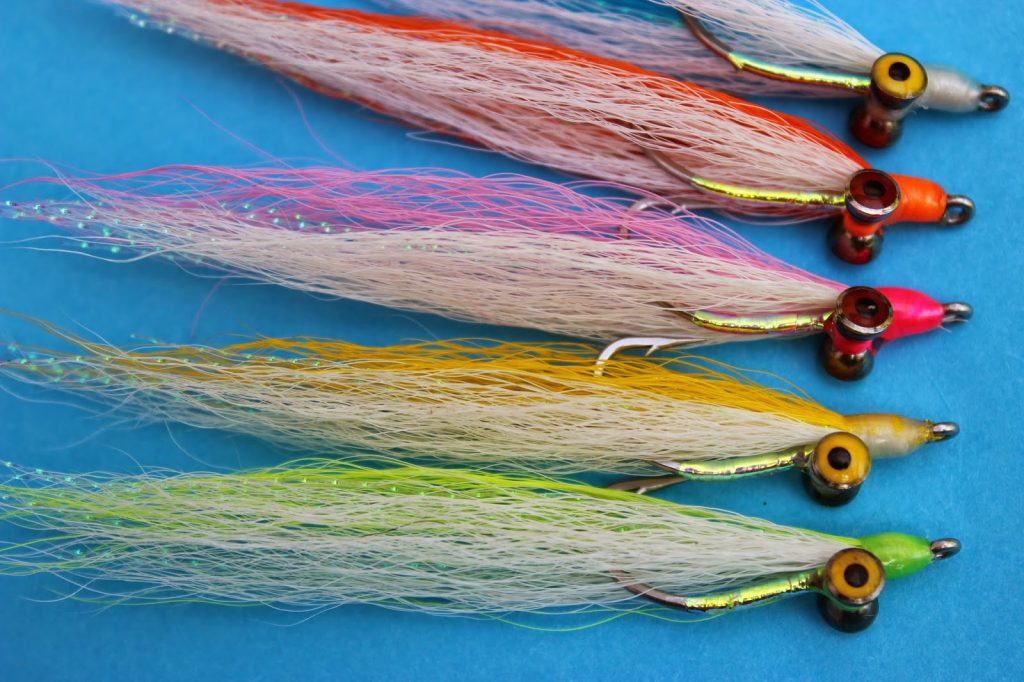
The reason that this fly is so effective is mainly down to the jigging action that is created by the dumbell style eyes, pauses in stripping the fly cause it to dip or jig which makes it look like an injured or dying prey fish. I personally have caught hundreds of fish on this pattern. I always carry a few Clousers in my box in different colours for different situations which I will cover later.
So once you have tied a few Clousers and are feeling more confident you might decide you would like to add a few other patterns to your box, but which one's?
Well, other easy to tie patterns I would recommend are Ray's fly and Brooke's Blond, both of these are classic patterns and again although originally designed with natural materials in mind, they can also be tied with synthetic substitutes, Buckfibre being the best alternative. Again instructions for tying these patterns can be found on the Internet.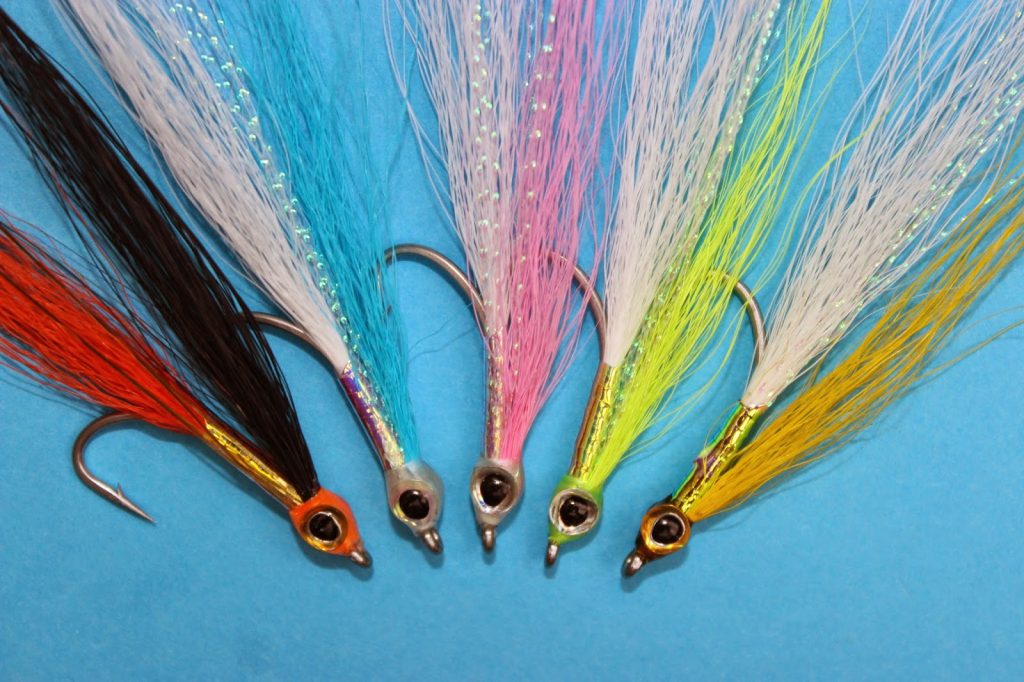
Another favourite of mine is the Surf Candy designed by Bob Popvic's. This is a great pattern that can be tied to represent many inshore baitfish, but in this country a slightly longer profile is a good mimick of Sandeels, which Bass absolutely love. Designed to be tied with synthetics, again you can utilise almost any material to create this pattern.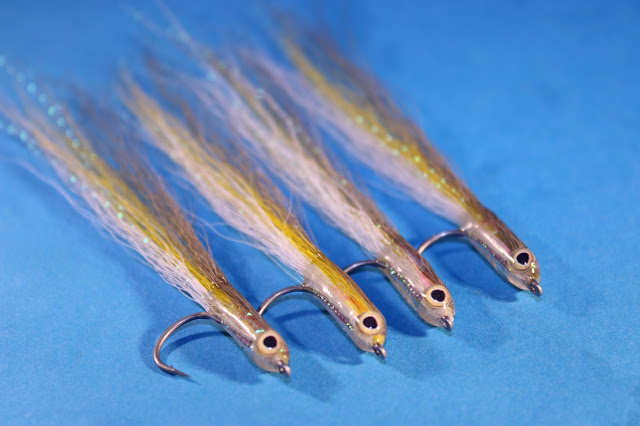
Another pattern that some Saltwater fly anglers favour is Lefty's Deceiver, designed by Lefty krey. Made from Bucktail and feather, and again can be tied with synthetic Bucktail but I find the feather doesn't tend to cast very well and hangs up in the air a bit reducing distance. No doubt it's an effective pattern though and worth having in your box. The Deceiver can be tied wholly from synthetic material such as in Bob Popovic's version which is not only a great looking fly but a very effective fish catcher.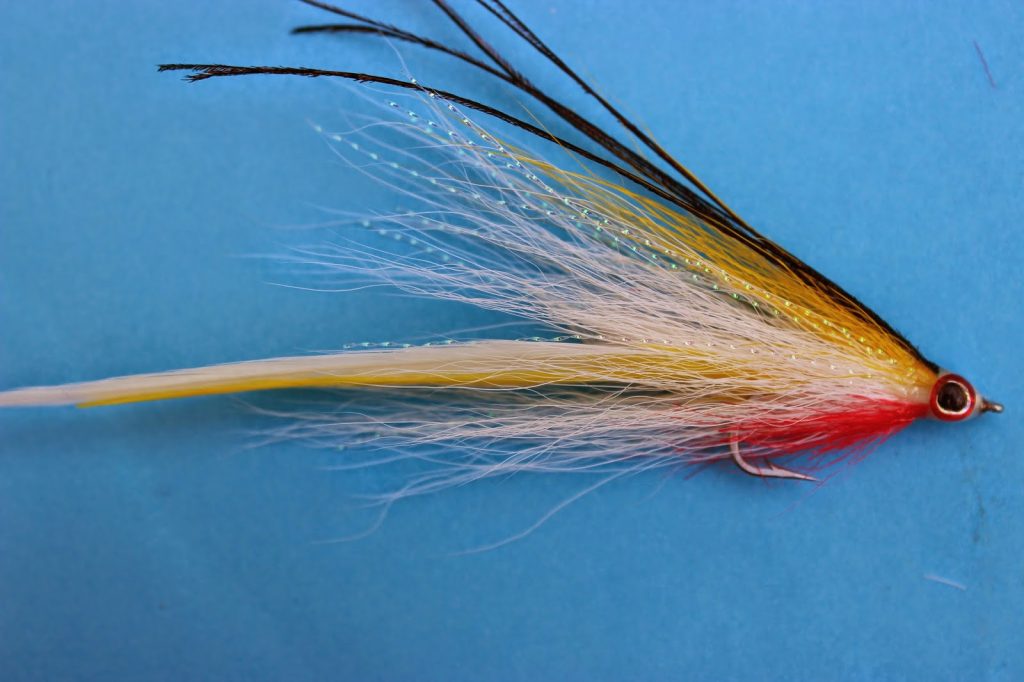
Finally comes Baitfish patterns, such as EP style Baitfish of which you will find a video on the You tube channel. This is the pattern I favour most these days and fish with a large proprtion of the time. Slightly advanced skills are required to tie this pattern effectively and get the right shape but they can be deadly for Bass.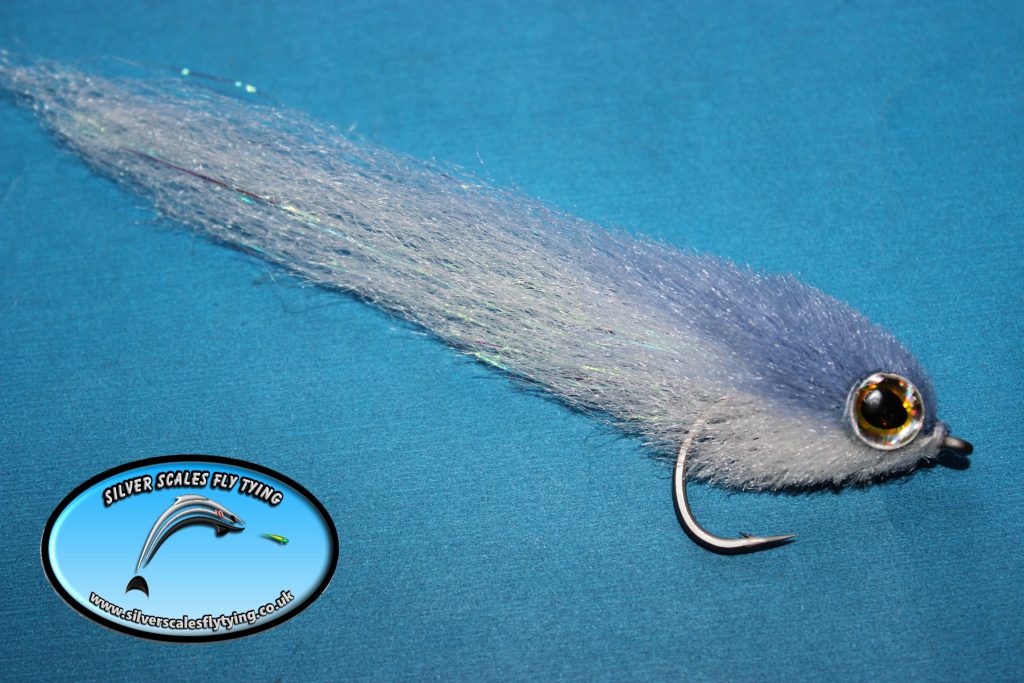
It is always worth purchasing some books on saltwater fly tying, Books by Bob Popovics and Lefty Krey are well worth having and I often refer to them for inspiration in my own tying.
I keep all these patterns of fly in various sizes and colours in my box, from size 6 Clousers for Mackerel and Garfish all the way up to 1/0 in the Baitfish patterns for Bass and Pollock. All tied on Saltwater resistant hooks, be it stainless steel or Nickel, which is actually quite saltwater resistant, you should always rinse your flies and hooks in warm fresh water after use anyway to preserve them keep them in good useable condition.
What colours to tie in and carry in your box is an important subject as colour can be the difference between success and failure on any given day. As a general guide, bright colours for bright days, darker and more natural colours for dull days and strongly contrasting colours for not so clear or murky water conditions. I always tie a colour over a white belly and rarely use solid coloured flies, except when fishing murkier conditions when strong contrasting colours have worked well, i.e Orange over a Black belly. This is just my preference but is not to say that solid colours won't work in clear conditions. Indeed I have caught many fish on solid colours whilst lure fishing but for some reason I've never fished solid coloured flies. The best thing to do on any given day is to assess the conditions and then cycle through various colours until you get a hit. If the optimum stage of the tide has passed and you haven't had a hit then the fish probably are not present and it's time to move on.
Regarding adding flash to flies, this is something I always do and catch plenty of fish as a result, however I do know of very successful anglers that don't add flash to their Bass flies and catch just as well. I think this is down to personal preference as well as confidence. Adding flash may just get the edge on the day but conversely it may make the fish shy away if they are feeling particularly nervous. For me the jury is still out on this subject but my own feeling is I would rather have some flash in the fly to make it a fair representation of a preyfish most of which to be fair, have some kind of shiny reflective appearance to them.
So to summarise if you are new to Saltwater fly fishing and tying, start off with the basics and work you way up. As your skills improve you will be able to progress onto more challenging patterns. Tie up a variety of colours and sizes to try and cover varying conditions. Use the basic rule of thumb of bright day bright fly and dull day dull fly as a starting point and go from there.
There is no doubt tying your own flies and then subsequently catching on them is a very satisfying feeling, and adds to the whole experience that Saltwater fly fishing offers. As previously stated they do not have to be works of art to catch fish, just be a fair representation of a baitfish in the right colour for the given conditions.
Welcome !
I am a passionate Saltwater fly fisherman. I hope you enjoy browsing the blog and please also visit my Webshop where you will find many high quality materials for tying those Saltwater and Predator flies.
Pages
- Home
- Step by Steps EP Baitfish
- Step by Steps, Mylar Sandeel
- Step by step Mega Laser dub Baitfish
- Step by Step Mylar Sea Trout Candy
- Step by Steps Chris's Shrimp
- Step by Steps, Foam Grasshopper
- Step by Step Polar Flash mini Baitfish
- Step by Step Livebait Dubbing Baitfish
- Step by Step Barred Livebait Minnow
Tuesday, 13 March 2018
Saltwater fly fishing, which flies should I tie??
Subscribe to:
Post Comments (Atom)

No comments:
Post a Comment
Please leave a comment here if you wish to message me. Thanks.